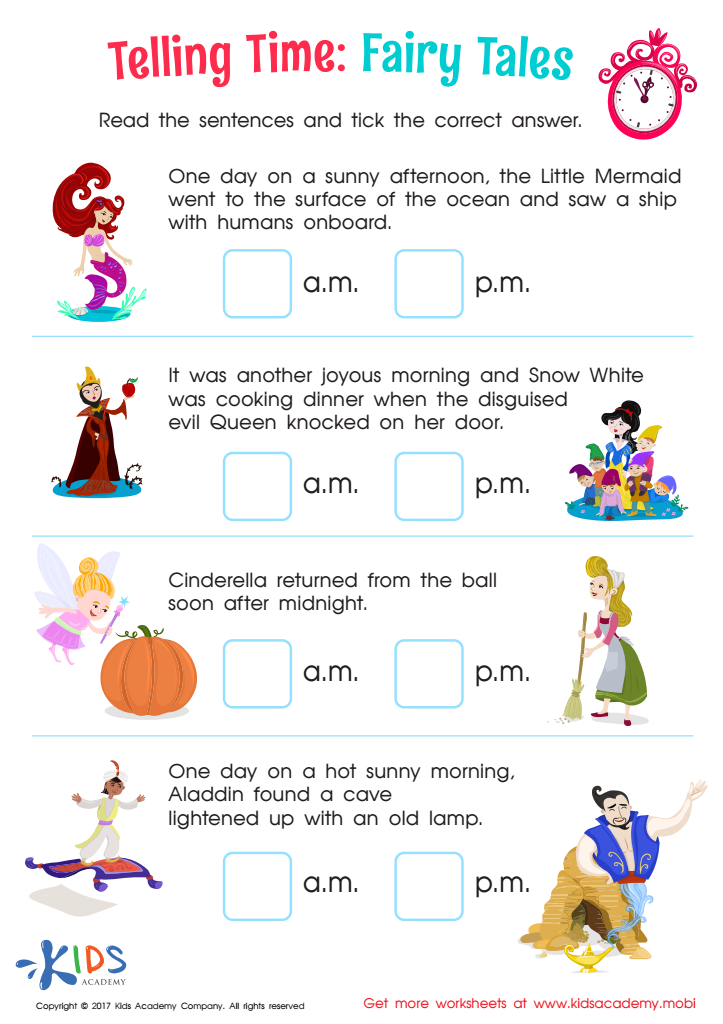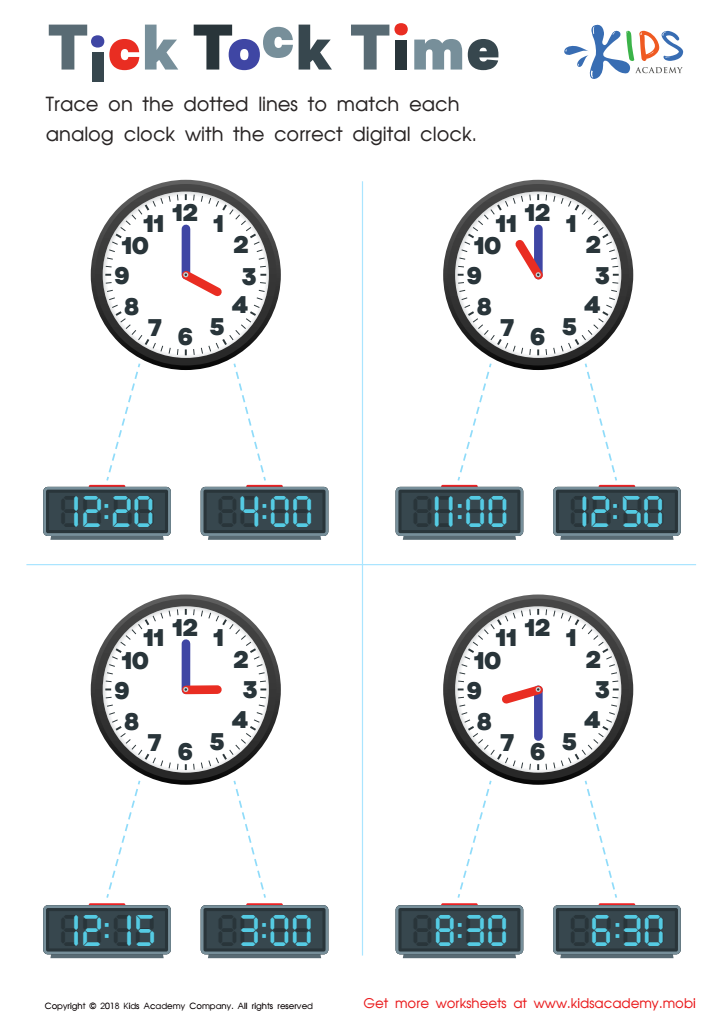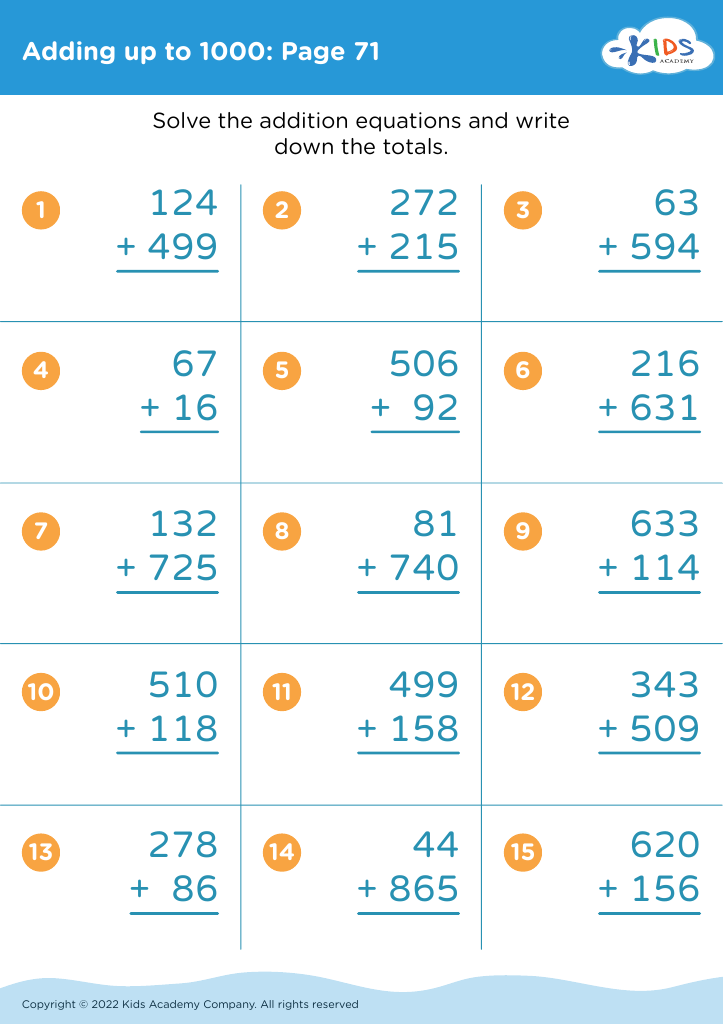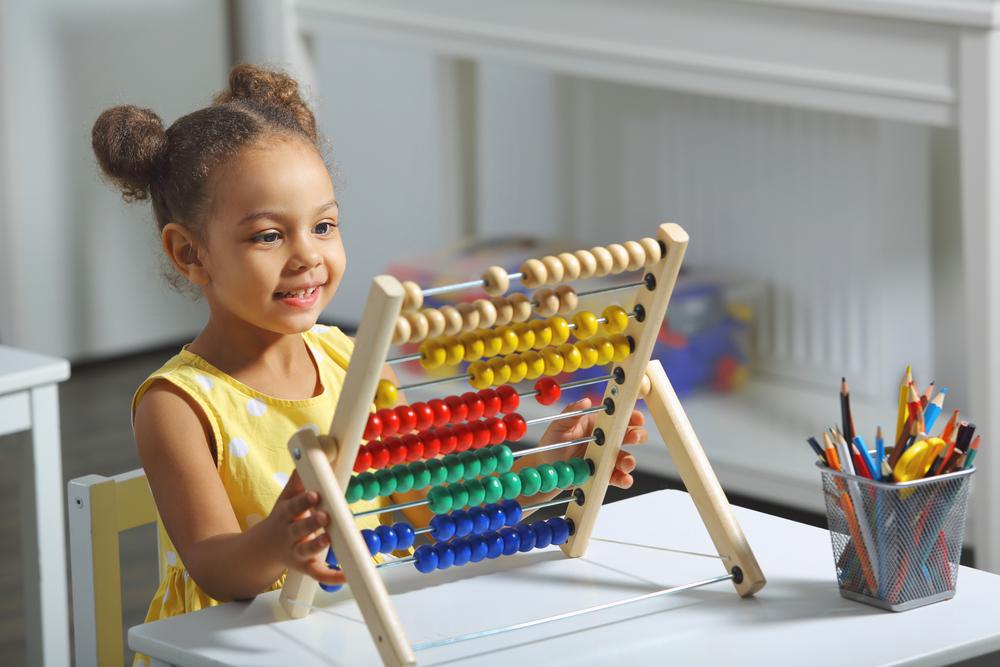Analog clock reading Worksheets for Ages 5-7
4 filtered results
-
From - To
Our "Analog Clock Reading Worksheets for Ages 5-7" offer engaging exercises designed to help young learners master telling time. Each worksheet provides fun and interactive activities to reinforce understanding of hour and minute hands, building essential time-telling skills. Ideal for kindergarten to 2nd grade, these printables blend educational concepts with colorful illustrations to make learning enjoyable. Encourage your child to confidently read analog clocks while developing independence and time management. Perfect for classroom use or at-home practice, these worksheets support foundational math skills and ensure a strong start in early education. Download and watch their skills grow!


Telling Time: Fairy Tales Worksheet


Tick Tock Time Worksheet


Time to Catch the Train Part 2 Worksheet
Understanding how to read an analog clock is a vital skill for children aged 5-7, helping them grasp the concept of time—a fundamental aspect of daily life. For one, this skill is strongly linked to mathematical competencies. When children learn to tell time, they are introduced to the concepts of numbers, sequences, and the passage of minutes and hours. This reinforces their numerical understanding and enhances their ability to perform addition and subtraction.
Additionally, analog clocks encourage children to process information visually and conceptually. Unlike digital clocks, which display time outright, analog clocks require children to interpret the positions of the hour and minute hands, fostering critical thinking abilities and problem-solving skills.
Socially and emotionally, mastering analog time-telling can empower children, boosting their self-confidence and independence. They can manage their daily routines better—knowing when it’s time for school, play, meals, or bedtime. It adds structure to their lives, which is particularly comforting and crucial at this developmental stage.
Furthermore, analog clocks encourage a relationship with the traditional, tactile elements of learning. In our increasingly digital age, understanding time from an analog perspective enriches children's ability to face various situations with a balanced skill set. Thus, nurturing this skill is not only about reading a clock but building foundational life skills.
 Assign to My Students
Assign to My Students






.jpg)










